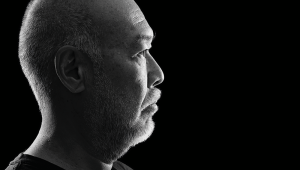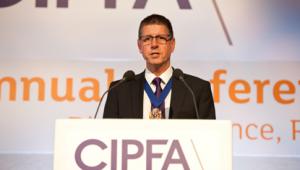When Cabinet Office minister Francis Maude announced recently that the 2011 Census could be the last of its kind, it was hardly revelatory. In 2008 the Treasury Select Committee argued that next year’s count should be the last to use the current approach, stating that the growing range of information on local populations must provide a better way of counting the nation.
For all the criticism aimed at the Census – too intrusive, out of date before it sees the light of day, declining participation rates – replacing it with something better has always eluded us. Only for World War II did the Census cease and only a crisis in public funding of the stature of that we now face threatens to end a run stretching back over two centuries.
Changes to the ten-year count should not simply be about making politically attractive savings in the short term. With the folding stuff in such short supply over the coming years, it is vital that public service planning – so often funded on the basis of population at the last Census – is well served by it. Directing diminished resources accurately is vital, which means protecting the Census outputs used in the formulas for grant awards. To draw back the horse at this last fence would be foolhardy, especially given the outlay already on next March’s count.
But what are the options in the longer-term? Other countries provide some insight.
From our starting position, population registers, usually supplemented by other administrative sources such as tax or employment information, are most radical. These are already used in Denmark (since the 1980s), Finland, Sweden and Norway. Belgium, Switzerland and Germany are the new kids on the block in 2011.
The French introduced a rolling Census and sample survey approach from 2005. Effectively, the Census is a short headcount, while larger communes are sampled and surveyed more fully on a five-year cycle (the smallest areas are still in fact a true Census). The US switched to this methodology in 2010. Head counts are still collected by a Census short-form but the American Community Survey samples 3 million households per year to gain a deeper picture of life in America. In this scenario, sample for some is a dirty word. The Chief Statistician for Canada has just resigned, stating that a voluntary survey cannot take the place of a mandatory Census.
At the broader level, there is an inevitable trade-off based broadly around accuracy – local detail and timeliness – and the inevitable value for money consideration. The US and French headcount approach does allow small geographies to be estimated, and although data will be based on several different years, it will be more up-to-date (on average) than a decennial census.
The (broadly) Scandinavian approach appears on the face of it to be frighteningly efficient. Asking citizens to inform authorities whenever they move does mean that what is lost in detail is made up for in the highly contemporary nature of the data. This approach is weaker on detailed estimates for very small geographies (sub-ward level for England and Wales) and detailed analysis of sub-groups within the population.
The Office for National Statistics’ Beyond 2011 project progresses. Thinking needs to be accelerated now but not at the risk of creating a hastily arranged cut-and-shut job. Where more work is required is not just on the cost of each method, but what each delivers by way of a meaningful picture of the population, and subsequent to this, policy and service delivery decisions.
For me, there is also something more fundamental about how we count ourselves that is linked to national psychology. In France, the Marie, tricolore flying, is a feature of even the tiniest commune; in German towns, the Rathaus is equally prominent; the traditionally liberal Scandinavians always appear pragmatic and comfortable in the face of authority; all are more comfortable with the state and its role in their lives. As with parts of the ID card debate, we British run the risk of enveloping ourselves in a fog of privacy and data protection law and losing sight of the objective of the exercise.
Back to 2011. We cannot tolerate apathy in the forthcoming Census. The Greater London Authority will be working with London Councils and the boroughs with the simple aim of persuading people in the capital to take part. Not only should filling in the form be a matter of local civic pride but it is a duty which, imperfect as the Census might be, still brings benefit to the communities we all live in.
Andrew Collinge is assistant director of the Greater London Authority











